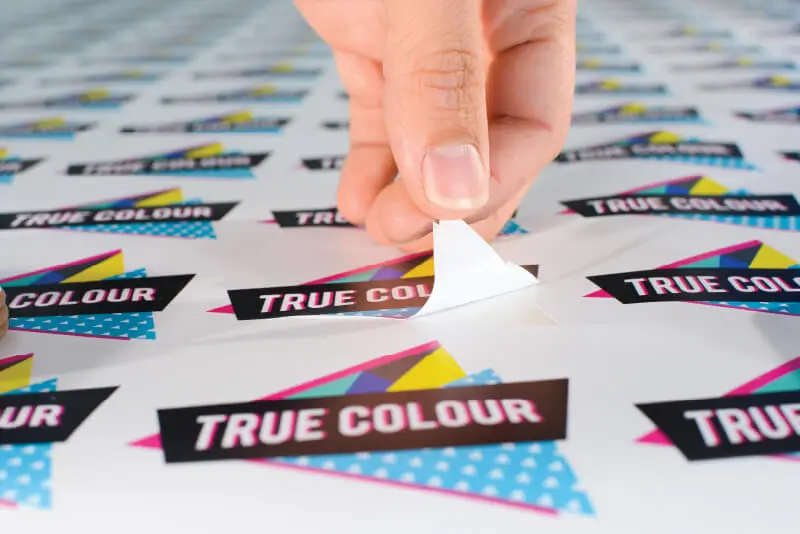Sticker label printing is a crucial aspect of many businesses, but it can be frustrating when things don’t go as planned. Whether you’re dealing with smudged prints, alignment issues, or paper jams, troubleshooting common problems is essential to ensure smooth operations. In this guide, we’ll walk through some practical tips for troubleshooting common issues in sticker label printing, helping you overcome obstacles and achieve professional results.
Identifying Print Quality Issues:
Print quality problems are a common frustration in sticker label printing. If your labels are coming out faded, streaked, or uneven, there are a few things you can check. Start by examining your printer settings to ensure they’re optimized for the label material you’re using. Cleaning the printhead and rollers can also make a big difference in print quality. If you’re still experiencing issues, consider replacing the ink or toner cartridge – sometimes, a fresh cartridge is all it takes to restore print quality.
Addressing Alignment and Registration Problems:
Misaligned or skewed prints can make your labels look unprofessional. To troubleshoot alignment issues, double-check your label design and printer settings to ensure everything is configured correctly. Inspect your label stock for any damage that could be causing feeding or alignment problems. Adjusting the printer’s media settings and calibration can also help improve alignment and registration.
Dealing with Paper Jams and Feeding Problems:
Paper jams are a headache for anyone using a printer, and labels for thermal printers are no exception. Remove any jammed labels from the printer’s path if you encounter a paper jam. Take care to follow the manufacturer’s instructions to avoid causing damage to the printer. Check your label stock for wrinkles, creases, or static buildup that could be causing feeding problems. Adjusting the paper guides and trays can also help ensure smooth feeding and prevent future jams.
Troubleshooting Software and Connectivity Issues:
Sometimes, sticker label printing problems are due to printing software or connectivity issues. If you’re experiencing errors or glitches when sending print jobs to the printer, try restarting the printer and your computer to reset the connection. Ensure your printer drivers are current and compatible with your operating system. If you’re using label design software, check for updates and patches that could address compatibility issues or bugs. Verifying that the printer is properly connected to the network or computer and that there are no issues with cables or connections can also help resolve software and connectivity issues.
Ensuring Compatibility with Label Stock:
Another common issue in sticker label printing is compatibility between the printer and the label stock. Different printers are designed to work with specific label materials, and using incompatible stock can result in poor print quality or feeding problems. Before purchasing label stock for your printer, verify it is compatible with your printer model and specifications. Depending on your type, look for labels specifically designed for thermal, laser, or inkjet printers. Using the correct label stock will help ensure optimal performance and prevent printing issues.
Checking Printer Settings for Print Mode:
Print mode settings can also affect the quality and appearance of sticker labels. Many printers offer different print modes, such as draft, normal, and high quality, which can impact print speed and resolution. If you’re experiencing print quality issues, try adjusting the print mode settings to see if it makes a difference. Experiment with different modes to find the optimal balance between print quality and speed for your specific printing needs. Remember that higher quality modes may result in slower print speeds but produce crisper, more vibrant prints.
Performing Regular Printer Maintenance:
Regular maintenance is key to preventing sticker label printing problems and prolonging the life of your printer. Schedule routine cleaning and maintenance tasks, such as printhead cleaning, roller cleaning, and calibration, to keep your printer in optimal condition. Follow the manufacturer’s guidelines for maintenance procedures and intervals to ensure thorough and effective cleaning. Additionally, inspect the printer regularly for any signs of wear or damage, such as worn rollers or loose parts, and address any issues promptly to prevent further problems.
Investing in Quality Label Design Software:
The software you use to design and print your sticker labels can have a significant impact on the quality and reliability of your prints. Invest in quality label design software that offers a wide range of design tools, templates, and customization options. Look for software compatible with your printer and label stock that provides barcode generation, variable data printing, and colour management features. Quality label design software can streamline the design process, improve print accuracy, and help you create professional-looking labels with ease.
Seeking Professional Assistance When Needed:
If you’ve tried troubleshooting common sticker label printing issues and are still experiencing problems, don’t hesitate to seek professional assistance. Contact the manufacturer’s customer support team or a qualified printer technician to help diagnose and resolve more complex issues. They can provide expert guidance, troubleshooting tips, and repair services to keep your printer running smoothly. Investing in professional assistance can save you time, frustration, and costly mistakes in the long run.
Conclusion:
Troubleshooting common issues in sticker label printing can be frustrating, but with a little patience and know-how, you can overcome these obstacles and achieve professional results. By following the tips outlined in this guide – from optimizing printer settings to addressing alignment problems and paper jams – you’ll be well-equipped to tackle any printing challenge that comes your way. Remember to approach troubleshooting systematically, starting with the most likely causes and working through potential solutions.





